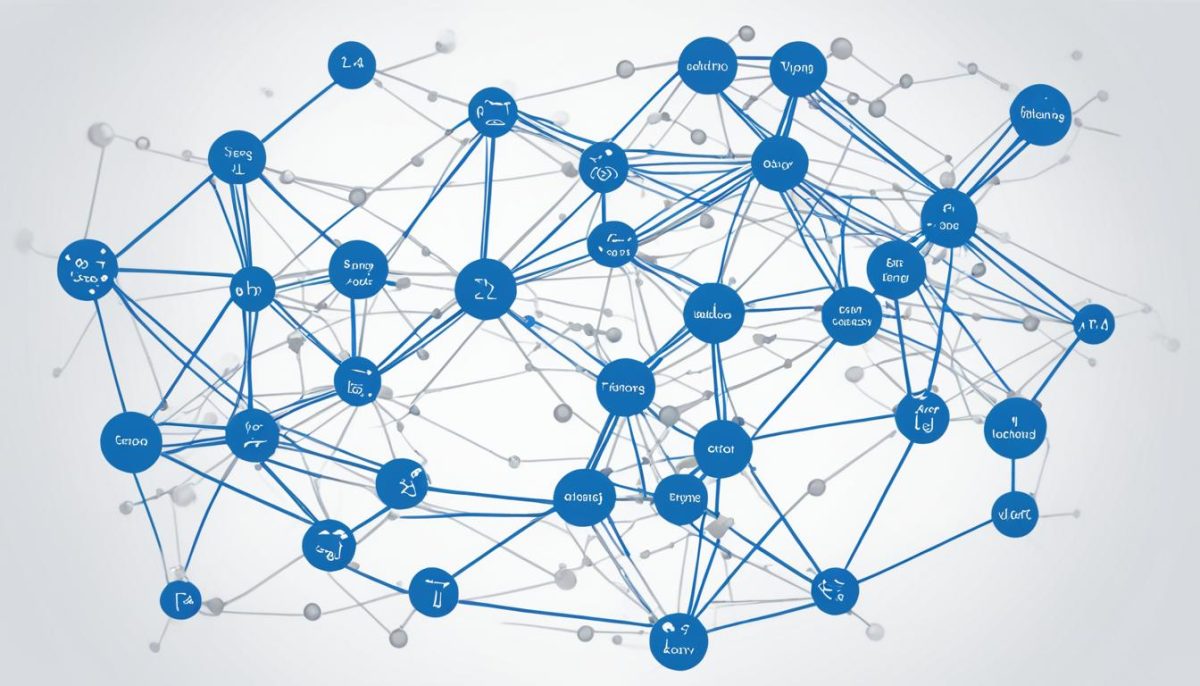News
The Best Programming Languages to Learn in 2024
In today’s world, mastering programming languages is crucial for advancing careers and staying ahead in the tech industry. With numerous options available, choosing the right language to learn can be overwhelming. In this article, we will explore the top programming languages that are in demand among employers in 2024, providing details on their usage, complexity, and industry applications.
Key Takeaways
- Learning programming languages can significantly boost your career potential.
- Choosing the right programming language requires considering its usage, complexity, and industry applications.
- Procedural programming languages like C and Pascal are widely used in engineering, gaming, and finance.
- Functional programming languages such as Haskell and Lisp are known for their flexibility and data transformation capabilities.
- Object-oriented programming languages like Java and Python define objects and their behavior, making them suitable for creating complex systems.
What is a Programming Language?
A programming language is a means for developers to communicate with computers. It provides a structured and standardized way to write instructions that the computer can understand and execute. Programming languages are used to convert human-readable code into machine code, which consists of binary instructions that the computer processes.
Programmers use programming languages to define the logic and behavior of software applications. These languages allow developers to write algorithms, perform calculations, manipulate data, and create interactive user interfaces. Programming languages serve as a bridge between human understanding and machine execution.
There are various types of programming languages, each with its own syntax, rules, and purposes. From low-level languages like Assembly, which closely resembles machine code, to high-level languages like Python, which are more abstract and easier to read and write, there is a wide range of languages to choose from. Additionally, there are visual programming languages that use graphical elements instead of traditional code, making them accessible to a broader audience.
“Programming languages are the tools we use to express our ideas, solve problems, and build innovative software.”
Understanding programming languages is essential for anyone aspiring to become a developer, as they form the foundation of software development. With the right programming language, you can bring your ideas to life and create applications that can revolutionize industries, improve efficiency, and solve complex problems.
Visual Programming Languages
Visual programming languages offer an alternative approach to traditional textual programming by representing code through graphical elements. They allow developers to create programs by dragging and dropping graphical components and connecting them to define logic and flow. These languages provide a visual representation of code, making it easier for beginners to understand the structure and flow of a program.
Visual programming languages are often used in educational settings to introduce programming concepts to students and to enable non-programmers, such as artists or designers, to create interactive applications without extensive coding knowledge. Some popular visual programming languages include Scratch, Blockly, and LabVIEW.
Major Types of Programming Languages
In the world of programming, languages come in various types based on their programming paradigm. Each type has its own characteristics and is suitable for different purposes. Let’s explore the major types:
Procedural Programming Languages
Procedural programming languages, such as C and Pascal, break programs into functions or procedures that perform specific tasks. These languages focus on step-by-step instructions and provide a clear structure for program execution. Procedural programming languages are often used for system-level programming and tasks that require precise control over hardware resources.
Functional Programming Languages
Functional programming languages, such as Haskell and Lisp, emphasize model computations and data transformation using functions. These languages treat computation as the evaluation of mathematical functions and avoid changing state or mutable data. Functional programming is favored for its simplicity, modularity, and suitability for concurrent programming.
Object-oriented Programming Languages
Object-oriented programming (OOP) languages, including Java and Python, revolve around the concept of objects. Objects encapsulate data and behavior, allowing the creation of complex systems through inheritance, polymorphism, and encapsulation. Object-oriented programming is widely used and provides a powerful way to model real-world objects and relationships.
Scripting Languages
Scripting languages like Python and Perl are often interpreted and designed for tasks that involve automation, rapid prototyping, and ease of use. These languages prioritize simple syntax and dynamic typing, enabling developers to write scripts quickly without the need for compilation. Scripting languages are commonly used in web development, system administration, and data analysis.
Logic Programming Languages
Logic programming languages, such as Prolog, are based on formal logic and focus on solving problems through logical inference. These languages provide a declarative approach to programming, where programs consist of rules and facts that define relationships between objects. Logic programming languages are commonly used in areas like artificial intelligence, expert systems, and theorem proving.
Imperative Programming Languages
Imperative programming languages, such as C, C++, and Java, provide explicit step-by-step instructions for program execution. These languages focus on maintaining and modifying program state through variables, loops, and conditional statements. Imperative programming is widely used for systems programming and offers fine-grained control over low-level operations.
Understanding the different types of programming languages allows developers to choose the most suitable language for their specific needs and project requirements. Each type has its own strengths and weaknesses, making it essential to assess the programming paradigm and features that align with the intended purpose.

Procedural Programming Languages
Procedural programming languages, such as C, Pascal, and FORTRAN, are widely used in fields like engineering, gaming, and finance. In this programming paradigm, programs are divided into functions or procedures that perform specific tasks. These procedures can be called from other parts of the program, allowing for code reuse and flexibility.
While procedural programming may be considered less flexible compared to other paradigms, it still holds significant importance in computer science education. The structured nature of procedural programming languages enhances readability and maintainability, making them suitable for complex projects in engineering, gaming, and finance.
“The procedural programming paradigm provides a systematic approach to problem-solving, breaking down complex tasks into smaller, manageable procedures. This allows developers to code efficiently and effectively, resulting in robust and reliable solutions.”
Procedural programming languages are favored in the engineering field due to their ability to perform intricate calculations and data manipulations, ensuring precision and accuracy in designs and simulations. In the gaming industry, procedural languages like C enable developers to optimize performance and create immersive gameplay experiences. Additionally, procedural languages like FORTRAN are extensively used in finance for numerical computation and modeling.
As coding practices evolve and new programming paradigms emerge, it is essential to acknowledge the continued relevance and influence of procedural programming languages in various industries.
Advantages of Procedural Programming Languages:
- Clear structure and modular design facilitate code organization and readability.
- Code reuse through the invocation of procedures promotes efficiency and reduces redundancy.
- Well-suited for mathematical computations and complex simulations.
- Easier troubleshooting and debugging due to clear program flow.
Disadvantages of Procedural Programming Languages:
- Less flexibility compared to other programming paradigms.
- Limited support for complex data structures and abstraction mechanisms.
- Difficulty in managing large codebases due to the absence of strong encapsulation.
- Less emphasis on reusability and scalability compared to object-oriented programming.
Functional Programming Languages
Functional programming languages offer a unique approach to software development, emphasizing flexibility and reliability. In these languages, such as Haskell, Clojure, Lisp, and Scala, functions play a central role in performing computations and transforming data. By eliminating mutable state and allowing for nested functions and independent units of code, functional programming enables efficient parallel programming and encourages a more modular and scalable development process.
One of the key advantages of functional programming languages is their ability to model computations accurately and expressively. By using functions as building blocks, developers can reason about programs more effectively, leading to code that is easier to understand and maintain.
In addition, functional programming languages excel at data transformation. With their emphasis on immutability and pure functions, these languages provide a solid foundation for manipulating data in a declarative and concise manner.
“Functional programming is a powerful paradigm that opens new possibilities in software development. The ability to reason about programs and perform data transformations with confidence sets it apart from other programming approaches.”
To further illustrate the benefits of functional programming languages, let’s take a look at a comparison table:
Object-oriented Programming Languages
When it comes to programming languages, object-oriented programming (OOP) has gained significant popularity. OOP focuses on the organization of code by defining objects and their behavior. With OOP, we can create complex systems by connecting objects that interact with each other.
Some of the most widely used object-oriented programming languages include Java, Python, C++, and Ruby. These languages provide powerful tools and features for building efficient and scalable applications. Let’s take a closer look at these languages:
Java
Java is a versatile language known for its platform independence. It is widely used in the development of enterprise-level applications, Android apps, and web services. With Java’s extensive libraries and frameworks, developers can easily create robust and secure software solutions.
Python
Python is a beginner-friendly language that offers simplicity and readability. It is widely used in various domains, including web development, data analysis, scientific computing, and artificial intelligence. With its vast ecosystem of libraries and frameworks, Python allows developers to quickly build powerful applications and prototypes.
C++
C++ is a powerful language that combines high-level and low-level programming. It is commonly used for system programming, game development, and performance-critical applications. C++ provides extensive control over hardware and memory management, making it a popular choice for developers seeking efficiency and performance.
Ruby
Ruby is a dynamic and expressive language known for its simplicity and elegance. It is often used for web development, thanks to the Ruby on Rails framework. Ruby’s clean syntax and focus on developer happiness make it a delightful language to work with.

One of the key concepts in object-oriented programming is inheritance. It allows objects to inherit properties and methods from a parent class, promoting code reuse and modularity. Inheritance enables developers to create hierarchies of objects, organizing them based on their relationships.
Object-oriented programming languages provide a powerful and intuitive way to structure code and create software solutions. With Java, Python, C++, and Ruby, developers have a wide range of options for building applications in different domains. By leveraging the principles of OOP and inheritance, we can write clean and reusable code that enhances productivity and maintainability.
Scripting Languages
In the world of programming, there are various types of languages that serve different purposes. One such category is scripting languages. These languages, including Python, Perl, and Bash, are interpreted languages that are widely used for a range of tasks.
Python: Python is often regarded as the easiest programming language for beginners to learn. It offers a clear syntax and high-level data structures, making it a popular choice among developers. Python also provides a vast array of built-in libraries, allowing for streamlined development and enhanced productivity.
Perl: Perl, on the other hand, is commonly used for text manipulation tasks. It is known for its powerful regular expression capabilities, making it ideal for parsing and manipulating large amounts of text efficiently.
Bash: Bash, short for “Bourne Again SHell,” is frequently utilized as the default command interpreter for Linux/GNU operating systems. It provides a command-line interface, allowing users to execute commands and automate tasks easily.
Scripting languages are particularly valuable in the realm of web development, as they facilitate server-side and client-side scripting. Server-side scripting involves executing code on the server to generate dynamic web content. Client-side scripting, on the other hand, allows for interactivity on the user’s browser.
“Scripting languages enable developers to write code that interacts with web browsers, databases, and other software services, helping to create dynamic and interactive web applications.”
Below, we have summarized the key features of these scripting languages:
| Language | Key Features |
|---|---|
| Python | Easy syntax, extensive libraries |
| Perl | Text manipulation, regular expressions |
| Bash | Command-line interface, Linux/GNU interpreter |
Python Example
Let’s take a look at a simple Python script that performs a common task:
import requests
# Fetch data from an API
response = requests.get('https://api.example.com/data')
# Process the response
if response.status_code == 200:
json_data = response.json()
for item in json_data:
print(item['name'])
In this example, Python is used to fetch data from an API and process the response. The code demonstrates the simplicity and readability of Python, making it an excellent choice for beginners and experienced developers alike.
Logic Programming Languages
Logic programming languages, such as Prolog, are a fascinating subset of programming languages that are based on formal logic. They are ideal for applications that require reasoning and conjecture, particularly in the fields of artificial intelligence and expert systems.
In logic programming languages, programs are composed of logical statements or rules that define relationships among objects. These rules allow for the implementation of sophisticated problem-solving techniques. Logic programming languages offer a unique approach to programming, focusing on relationships and constraints rather than traditional imperative instructions.
One prominent logic programming language is Prolog. Developed in the 1970s, Prolog stands for “Programming in Logic” and is widely used in problem-solving applications. Its syntax and semantics are based on formal logic, allowing for concise and expressive programs.
Prolog is particularly beneficial in domains where reasoning and complex relationships play a crucial role. Its logical foundation makes it suitable for tasks such as natural language processing, expert systems, theorem proving, and even game development.
Prolog Example:
parent(john, mary).
parent(john, david).
parent(mary, anna).
female(mary).
male(john).
father(X, Y) :- parent(X, Y), male(X).
ancestor(X, Y) :- parent(X, Y).
ancestor(X, Y) :- parent(X, Z), ancestor(Z, Y).
This example demonstrates a simple Prolog program that defines relationships between individuals. The rules state that John is the parent of Mary and David, Mary is the parent of Anna, Mary is female, and John is male. It also defines two additional rules: one for determining fathers based on the parent and gender, and another for determining ancestors based on the parent-child relationship.
Logic programming languages, and Prolog in particular, offer a unique perspective on problem-solving, leveraging the power of formal logic to provide elegant solutions.
Next we will discuss imperative programming languages, which take a more traditional approach by providing step-by-step instructions for program execution.

Imperative Programming
Imperative programming is a fundamental concept in computer science, focusing on providing step-by-step instructions for manipulating the state of a program and its data structures. It describes the specific actions that a computer needs to take to solve a problem. This approach is widely used in software development and offers job opportunities in various industries.
There are several imperative programming languages that programmers can choose from, including:
- C: A powerful and efficient language commonly used for low-level programming and system programming tasks.
- C++: An extension of C that adds object-oriented programming features and is widely used for system programming, game development, and performance-critical applications.
- Java: A versatile language known for its platform independence and extensive library support. It is widely used for building enterprise-level applications, web applications, and Android mobile apps.
- Python: A popular language praised for its simplicity and readability. It is used in various domains, including web development, data analysis, machine learning, and scientific computing.
Imperative programming is particularly useful for system programming and low-level programming tasks, where direct control over hardware resources is necessary. These languages provide developers with the ability to manipulate memory, access hardware components, and optimize performance to create efficient, low-level code.
For example, C and C++ are commonly used in system programming to develop drivers, operating systems, and embedded systems. Java, on the other hand, is often used for building large-scale enterprise applications that require a high degree of reliability and maintainability. Python, known for its simplicity, is versatile enough to be used in various applications ranging from web development to machine learning.
To summarize, imperative programming languages like C, C++, Java, and Python offer flexibility, control, and job opportunities in software development across different industries. Whether you are interested in system programming, low-level programming, or developing complex applications, these languages provide a solid foundation for building efficient and powerful software.
Other Ways to Classify Programming Languages
In addition to their programming paradigm, programming languages can be classified in other ways, providing different perspectives on their usage and characteristics. Let’s explore some alternative ways to classify programming languages.
Front-end vs. Back-end Languages
One way to classify programming languages is by distinguishing between front-end and back-end languages. Front-end languages like HTML, CSS, and JavaScript are used to create and design user-facing elements of a website or application. They are responsible for the visual representation and interactivity of the user interface. On the other hand, back-end languages like Python, Ruby, and Java handle the logic and data management of the server-side operations. These languages interact with databases, process requests, and perform other server-side tasks.
High-level vs. Low-level Languages
Programming languages can also be classified as high-level or low-level, based on their level of abstraction from machine code. High-level languages like Python and Ruby provide more abstraction from hardware details, making them easier to read, write, and maintain. These languages prioritize developer productivity and expressiveness. On the other hand, low-level languages like Assembly and C offer more control over hardware resources and are closer to machine code. They provide detailed access to the underlying system’s hardware, enabling fine-grained optimization and efficiency.
Interpreted vs. Compiled Languages
Another way to classify programming languages is based on their execution methods. Interpreted languages like Python and Ruby are executed line by line, with each line being translated into machine code at runtime. They provide flexibility and dynamic behavior, allowing rapid development and easy debugging. Compiled languages like C and Java, however, are translated into machine code before execution, resulting in faster and more efficient performance. These languages typically require a separate compilation step before running the program.
Understanding the various ways to classify programming languages provides valuable insights into their different applications, strengths, and trade-offs. Whether you’re interested in front-end or back-end development, working at a high or low level of abstraction, or optimizing for interpretability or performance, there’s a programming language that suits your needs.
What Programming Language Should You Learn?
Selecting the right programming language to learn is a crucial decision that can significantly impact your career development. With a wide array of programming languages available, it’s important to consider market demand and your current programming skills when making a selection. At the same time, staying up-to-date with new languages and their applications is essential for aligning your choice with your interests and job prospects.
Here are some programming languages that are currently in high demand and offer various career opportunities in different industries:
- Python: Python is a versatile language known for its clear syntax and ease of use. It is widely used in backend web development and has frameworks like Django that power popular websites such as Mozilla, Instagram, and Spotify. Python is also popular in scientific computing and machine learning, making it a valuable skill in multiple industries and academic research.
- Java: Java is a robust and widely adopted language that is used in a variety of applications. It is commonly used for building enterprise-level software, Android app development, and backend systems. Java offers excellent career prospects due to its popularity and versatility.
- SQL: SQL (Structured Query Language) is crucial for working with databases. Proficiency in SQL is highly sought after in roles such as database administration, data analysis, and quality assurance engineering. As databases play a vital role in applications like social media platforms and payment processors, SQL skills are in high demand.
- TypeScript: TypeScript is a superset of JavaScript that offers additional features and tools for fast and reliable development. It has gained popularity in recent years, particularly among companies like Airbnb and Slack. Learning TypeScript can enhance your JavaScript skills and open up opportunities in web application development.
- Rust: Rust is a relatively new programming language that prioritizes speed and security. It is designed for low-level systems programming and is increasingly being adopted by companies like Dropbox and Coursera. Mastering Rust can lead to rewarding career prospects, particularly in fields that require safe and efficient code.
- Go: Go, also known as Golang, is a language developed by Google. It is designed for efficiency, simplicity, and scalability, making it ideal for developing concurrent systems and network services. Go is widely used by companies like Google, Uber, and Dropbox, and offers promising career opportunities.
- Swift: Swift is the programming language used for developing applications on Apple platforms, including iOS, macOS, watchOS, and tvOS. It offers a modern and intuitive syntax, making it easier to write and maintain code. Swift is a valuable skill for iOS developers and offers opportunities in the thriving Apple ecosystem.
- C#: C# (pronounced C sharp) is a versatile language developed by Microsoft. It is used for building Windows applications, web applications, and game development with the Unity game engine. C# offers strong career prospects, particularly for developers interested in Microsoft technologies and software development.
- JavaScript: JavaScript is the language of the web and is essential for front-end web development. It is used to enhance the interactivity and functionality of websites. Proficiency in JavaScript is highly valuable in the current tech landscape, as it offers a wide range of career opportunities.
When choosing a programming language, consider your career goals and the market demand for specific languages in your target industry. Assess your current programming skills and the learning curve associated with each language. By selecting a programming language that aligns with your interests, job prospects, and industry demand, you can enhance your career development and stay competitive in the ever-evolving tech landscape.

Python is also highly regarded in scientific computing and machine learning. It offers numerous libraries specifically designed for data analysis, manipulation, and modeling. NumPy and SciPy provide foundational tools for scientific computing, enabling complex mathematical operations and data processing. Additionally, Python has gained significant traction in the field of machine learning, with libraries such as TensorFlow and PyTorch allowing developers to build and deploy powerful machine learning models.
The versatility of Python extends beyond web development and scientific computing. It is widely used in automation, scripting, and desktop application development. The simplicity and readability of Python code contribute to its popularity among developers, as it enhances collaboration and reduces development time.
“Python’s syntax and readability make it a joy to work with. It offers a great balance between simplicity and power, allowing developers to express their ideas concisely and effectively. Whether you’re a beginner or an experienced programmer, Python’s versatility makes it a language worth learning.”
Advantages of Python:
- Clear and readable syntax: Python’s syntax is designed to be straightforward and easy to understand, making it a user-friendly language.
- Extensive library ecosystem: Python offers a vast collection of libraries and frameworks that cater to various domains, empowering developers to create complex applications efficiently.
- Community support: Python has a large and active community of developers, providing access to extensive documentation, tutorials, and resources.
- Integration capabilities: Python can seamlessly integrate with other programming languages and systems, allowing developers to leverage existing code and tools.
- Cross-platform compatibility: Python code can run on different operating systems, including Windows, macOS, and Linux, enhancing its portability.
Python’s versatility and extensive functionalities make it a valuable programming language for both professionals and beginners. Its applications span across industries, positioning Python as a language that offers diverse and rewarding career opportunities.
SQL
SQL, which stands for Structured Query Language, is a crucial programming language for working with databases. Specifically designed for storing, extracting, and manipulating data within a database, SQL plays a vital role in various industries and applications. It offers a standardized way to interact with databases, making it an essential skill for data professionals.
SQL programming involves performing data manipulation tasks, such as inserting, updating, and deleting records within a database. It also includes querying databases to retrieve specific information based on user-defined criteria. By mastering SQL, data professionals can efficiently handle large volumes of data and perform complex data analysis.
In today’s data-driven world, SQL skills are highly sought after by employers. Roles such as database administrator, data analyst, and QA engineer often require proficiency in SQL programming. As databases serve as the backbone of applications like social media platforms and payment processors, the ability to manipulate and extract data is crucial for ensuring their smooth operation.
Key Features of SQL:
- Designed for database management: SQL is specifically designed to work with relational databases, providing a comprehensive set of commands for database administration.
- Efficient data manipulation: SQL enables efficient data manipulation through simple and intuitive commands, allowing users to easily insert, update, and delete data in a database.
- Powerful querying capabilities: With SQL, users can write complex queries to retrieve specific data based on various conditions, making it a powerful tool for data analysis.
- Data integrity and consistency: SQL ensures data integrity and consistency by enforcing constraints, such as uniqueness, referential integrity, and data types.
Example SQL Query:
SELECT * FROM employees WHERE department = ‘Sales’ AND salary > 50000;
The above SQL query retrieves all employees from the “employees” table who work in the Sales department and have a salary greater than $50,000. Queries like this allow data professionals to extract specific information from databases with ease.
Overall, SQL programming is an essential skill for data professionals seeking roles in database management, data analysis, and data-driven decision-making. With its widespread usage and high demand in various industries, learning SQL opens up numerous career opportunities for individuals interested in working with data.

TypeScript
TypeScript is a programming language that has gained significant popularity in recent years. As a superset of JavaScript, TypeScript extends the capabilities of JavaScript by adding static typing and other advanced features. One of the key advantages of TypeScript is its strong support from Google, making it an excellent choice for developers looking to build robust and scalable web applications.
TypeScript offers a unique advantage in error prevention. By identifying errors before the JavaScript code is executed, TypeScript helps developers catch potential issues early in the development process, resulting in more reliable and efficient code.
According to a recent developer survey, TypeScript has been widely adopted by major companies such as Airbnb and Slack. Its growing popularity is a testament to its effectiveness in real-world projects. With TypeScript, developers can take advantage of additional tools and features that enhance productivity and enable faster development.
Benefits of TypeScript
- Static Typing: TypeScript enforces static typing, allowing developers to catch type-related errors during the development process rather than at runtime.
- Enhanced IDE Support: TypeScript provides extended support in popular integrated development environments (IDEs) like Visual Studio and VS Code, offering intelligent code completion, refactoring, and better navigation.
- Modern JavaScript Features: TypeScript supports the latest JavaScript features, making it possible to leverage modern language constructs while still maintaining backward compatibility.
- Strongly Typed Objects: TypeScript allows developers to define interfaces and use them to create strongly typed objects, enhancing code clarity and maintainability.
By adopting TypeScript, developers can leverage the benefits of a statically typed language while still enjoying the flexibility of JavaScript. It bridges the gap between JavaScript and statically typed languages, making it easier to write and maintain large-scale applications.
Whether you’re a seasoned JavaScript developer or new to the world of programming, learning TypeScript can broaden your skill set and open up new opportunities in the industry. With its increasing popularity and strong developer support, TypeScript is a valuable language to add to your programming repertoire.

Key Features of TypeScript
| Feature | Description |
|---|---|
| Static Typing | TypeScript enforces static typing, enabling developers to catch type-related errors during development. |
| Advanced Tooling | TypeScript provides enhanced tooling such as intelligent code completion, refactoring support, and better navigation in popular IDEs. |
| Modern JavaScript Support | TypeScript supports the latest JavaScript features, making it compatible with modern development practices. |
| Strongly Typed Objects | Developers can define interfaces and use them to create strongly typed objects, improving code clarity and maintainability. |
Rust
Rust is a relatively new programming language that has gained significant attention in recent years. Its focus on speed and security makes it a compelling choice for developers working on low-level systems programming.
One of Rust’s standout features is its emphasis on writing safe code. By implementing strict compile-time checks, Rust helps prevent memory access errors and system crashes, resulting in more stable and reliable software. This commitment to security has made Rust a popular choice in industries where safety is paramount.
Despite its reputation for being more challenging to learn than some other programming languages, Rust has seen a rising popularity among developers. Companies like Dropbox and Coursera have recognized its potential and are utilizing Rust for their internal operations, highlighting the language’s growing influence.
Mastering Rust can open up exciting career opportunities in the future. As businesses increasingly prioritize speed, security, and low-level systems programming, professionals skilled in Rust will be in high demand to tackle complex technical challenges.
FAQ
What is a programming language?
A programming language is a means for developers to communicate with computers by writing instructions that the computer follows to perform specific tasks.
What are the major types of programming languages?
The major types of programming languages are procedural, functional, object-oriented, scripting, logic, and imperative programming languages.
Which industries commonly use procedural programming languages?
Procedural programming languages like C, Pascal, and FORTRAN are widely used in fields like engineering, gaming, and finance.
What are the applications of functional programming languages?
Functional programming languages such as Haskell, Clojure, Lisp, and Scala are popular for model computations, data transformation, and efficient parallel programming.
How do object-oriented programming languages work?
Object-oriented programming languages like Java, Python, C++, and Ruby define objects and their behavior, allowing for the creation of complex systems with interconnected objects.
What are scripting languages used for?
Scripting languages like Python, Perl, and Bash are interpreted languages commonly used in web development for server-side and client-side scripting tasks.
What are the applications of logic programming languages?
Logic programming languages such as Prolog are used in applications that require reasoning and conjecture, like artificial intelligence and expert systems.
How are imperative programming languages used?
Imperative programming languages like C, C++, Java, and Python are commonly used for system programming and low-level programming tasks that require direct control over hardware resources.
How can programming languages be classified based on their abstraction level?
Programming languages can be classified as high-level or low-level, with high-level languages like Python and Ruby being easier to read and write, while low-level languages like Assembly and C offer more control over hardware.
Which programming languages are currently in demand?
Python, Java, SQL, TypeScript, Rust, Go, Swift, C#, and JavaScript are among the programming languages currently in demand and offer various career opportunities in different industries.
What are the applications of the Python programming language?
Python is widely used in back-end web development, scientific computing, and machine learning, with frameworks like Django and libraries like NumPy and TensorFlow being used in various fields.
Why is SQL an important programming language?
SQL is crucial for working with databases, enabling efficient data handling and analysis, and providing valuable skills for roles like database administrator, data analyst, and QA engineer.
What is TypeScript and why is it gaining popularity?
TypeScript is a programming language that is a superset of JavaScript and offers error prevention before JavaScript code execution. It is gaining popularity and is used by companies like Airbnb for faster and more reliable web application development.
What is Rust and what are its benefits?
Rust is a programming language designed for low-level systems programming with a focus on speed and security. By emphasizing safe code writing practices, Rust prevents memory access errors and system crashes, making it popular among developers and used by companies like Dropbox and Coursera.
